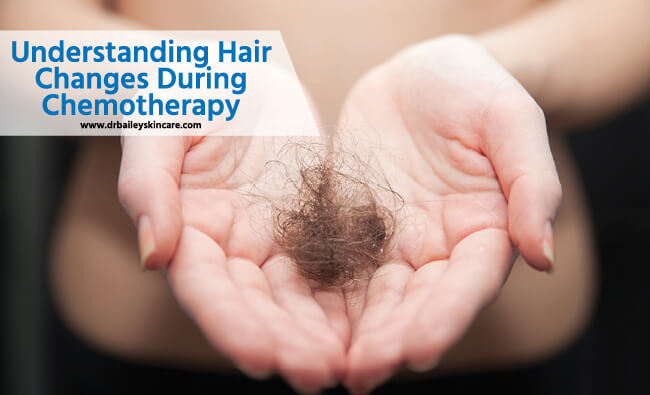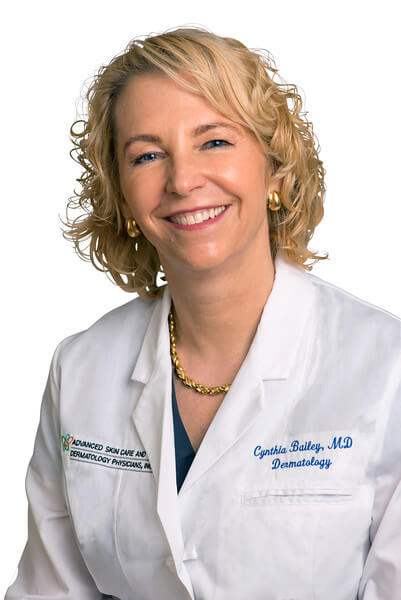Understanding Hair Changes During Chemotherapy

Hair loss is one of the most emotionally painful parts of the cancer treatment experience for many. Nothing screams "I have cancer!" louder than a bald head and a face without brows and lashes.
As a chemotherapy patient, I went through the horror of hair changes during chemotherapy first hand. As a dermatologist, I knew that hair loss was an inevitable part of my cancer treatment, and I still suffered from it when it happened to me.
How Does Chemotherapy Affect Hair?
- Some chemotherapy drugs impact hair growth more than others.
- Why do you lose hair during chemotherapy?
- How is chemo hair loss different than hair loss after surgery, pregnancy or severe illness?
- Why can hair sometimes grow back midway through chemo?
- What happens to hair growth once chemo is over?
- Is it possible for your hair to be permanently changed by chemo?
Some chemotherapy drugs impact hair growth more than others.
The dosages of the chemo drugs are also important to how severely a chemo course will effect your hair. Higher doses of the biggest hair growth offenders will have more dramatic impact on your hair follicles.
Why do you lose hair during chemotherapy?
What happens during chemo is that the drugs that impact hair growth actually shut down the follicle cells that are responsible for hair shaft formation and growth.
These are your hair matrix cells, and they reside at the deepest part of your hair follicle. Before you start chemo, 90% of your scalp’s 100,000 hairs are growing in the hair follicles. (We typically say they are in the "anagen phase," which means the growth phase.) Matrix cells actually become the hair shaft (they grow, divide and become “keratinized” meaning they die as a structure filled with the protein called keratin).
In the process of growing hair, your hair follicles make a lot of cells that then die to turn into the actual hair shaft.
- Under normal circumstances, the other 10% of your scalp hair follicles are resting for a short period of time, meaning the hairs are not growing (we call this phase of the hair cycle the "telogen phase").
- They eventually shed their hairs when their internal "clock" tells them to go back into the growth (anagen) phase.
This is why it's normal for people to shed around 100 hairs daily.
In resting telogen phase, chemo does not cause much impact.
Chemo drugs that cause hair loss do so by temporarily shutting down the anagen growth phase of hair matrix cells.
These busy cells can’t divide to grow the hair shaft because of how the chemo drugs actually work. Whether it’s cancer cells, your intestinal cells, or your hair matrix cells, these drugs prevent cells from dividing. The hair matrix cells stop dividing, the growing hair abruptly stops growing, and the hair just breaks off. Many patients note a sensation of discomfort when this happens, as I certainly did.
How is chemo hair loss different than hair loss after surgery, pregnancy or severe illness?
The type of hair loss from chemotherapy is different from the type of hair shedding that happens after pregnancy or surgery.
The type of hair loss that happens from pregnancy, surgery, illness or other trauma occurs because hair matrix cells were all put into a resting phase of telogen as a survival mechanism induced by the physiologic "trauma" endured. When the body feels sufficiently recovered, the follicles come out of telogen "hibernation;" once they wake up, they grow a brand-new hair, pushing the old hair out of the shaft.
This is called telogen effluvium. (The word "effluvium" is derived from a Latin term that means "to flow out.") With telogen effluvium, the matrix is not shut down but simply goes into its normal physiologic resting state. It then wakes up again to make an entirely new hair and has to push the resting one out to make room for more.
Why can hair sometimes grow back midway through chemo?
During a course of chemotherapy, some people's hair may grow back mid-way through their round of chemo. I'm often asked why this happens. It can happen when drugs are changed to chemo agents that are not as aggressive against hair growth. Different chemo drugs have different impacts on hair growth and not all drugs cause hair loss.
Chemo regimens often change over a course of treatment, and as a patient, you don't always notice. For example, the breast cancer chemo treatment called "AC/T" includes one part where you are given Adriamycin and Cytoxan. The other part of the treatment includes a phase where you are given a drug like Taxol. This is what I had. The Adriamycin is really hard on the hair follicles. Taxol was tough too, so there was no regrowth for me or the many other breast cancer patients treated with this chemo regimen. It was definitely not a pleasant experience!
What happens to hair growth once chemo is over?
Hair regrowth after chemotherapy is often a crazy adventure with new color, texture and "style" for a while. We don't exactly know why, but dark hair may come in snow white, straight hair can come in curly, etc.
 My own hair was as curly as a sheep's, which I loved! My chemo curls were sweet and I was so glad to have hair again. The photo here is me with the last of my chemo curls. Why this happens is a mystery though. What we do know is that once chemotherapy is stopped, the chemotherapy drugs slowly leave the body and the matrix cells gradually recover and start dividing again. There's probably a complex biochemical recovery that the cells go through when the matrix cells are stopped and then begin recovery after chemo. That process of recovery is most likely is why color and texture are a bit random.
My own hair was as curly as a sheep's, which I loved! My chemo curls were sweet and I was so glad to have hair again. The photo here is me with the last of my chemo curls. Why this happens is a mystery though. What we do know is that once chemotherapy is stopped, the chemotherapy drugs slowly leave the body and the matrix cells gradually recover and start dividing again. There's probably a complex biochemical recovery that the cells go through when the matrix cells are stopped and then begin recovery after chemo. That process of recovery is most likely is why color and texture are a bit random.
We don't know exactly what is going on, but researchers are studying the process in the hopes of understanding it.
The bottom line is that the process of post-chemo hair regrowth depends on a person's unique hair follicle physiology and the chemo cocktail they received.
Typically, hair color and texture changes after chemo are temporary. I'd love my chemo curls to be permanent, but they are growing out and my hair is once again becoming straight.
Is it possible for your hair to be permanently changed by chemo?
Yes, and unfortunately, there are even some cases where a person’s hair does not regrow well after chemo. Hair growth is definitely one of the adventures and misadventures that go along with the cancer survivor experience. I'm grateful to be here to experience it, bald head, curly or straight hair and all.
To learn more about my experience with chemo and also some other lessons that I learned, check out all my chemotherapy articles that I wrote as a physician undergoing chemo. I've summarized my recommendations for the best skin care during chemotherapy here.
 My popular Chemotherapy Skin Care Kit is an easy way to safely take care of your skin while you undergo chemo treatments. It also makes a thoughtful gift.
My popular Chemotherapy Skin Care Kit is an easy way to safely take care of your skin while you undergo chemo treatments. It also makes a thoughtful gift.
If you know someone who is facing the challenge of chemotherapy, this skin care kit is a thoughtful gift. I donate all of the profits to FORCE, the advocacy organization for the hereditary breast and ovarian cancer community. It is possible to prevent some of the disheartening impacts that chemo has on your skin if you are proactive, and this kit gives chemo patients one less thing to worry about.
Reference:
For more information on this topic, check out the following resource used in this article:
Yoon JS, Choi M, Shin CY, Paik SH, Kim KH1, Kwon O, Development of a Model for Chemotherapy-Induced Alopecia: Profiling of Histological Changes in Human Hair Follicles After Chemotherapy. J Invest Dermatol. 2015 Sep 15. doi: 10.1038/jid.2015.358.
